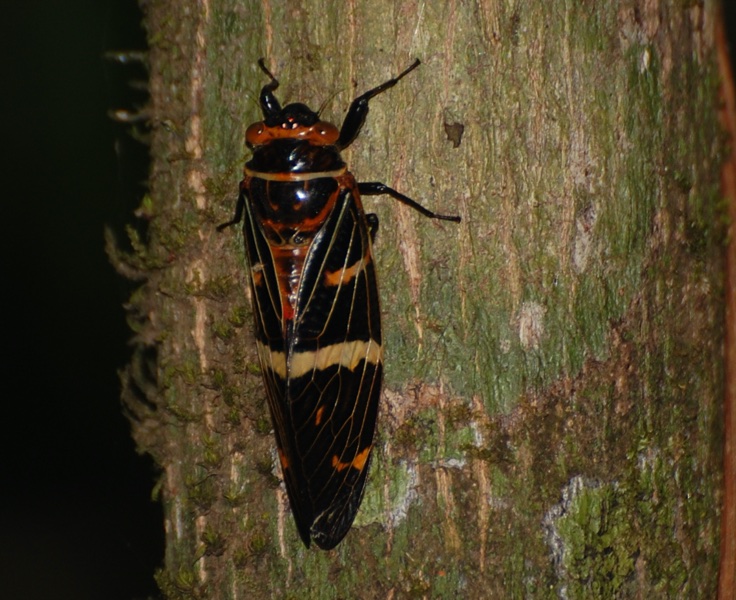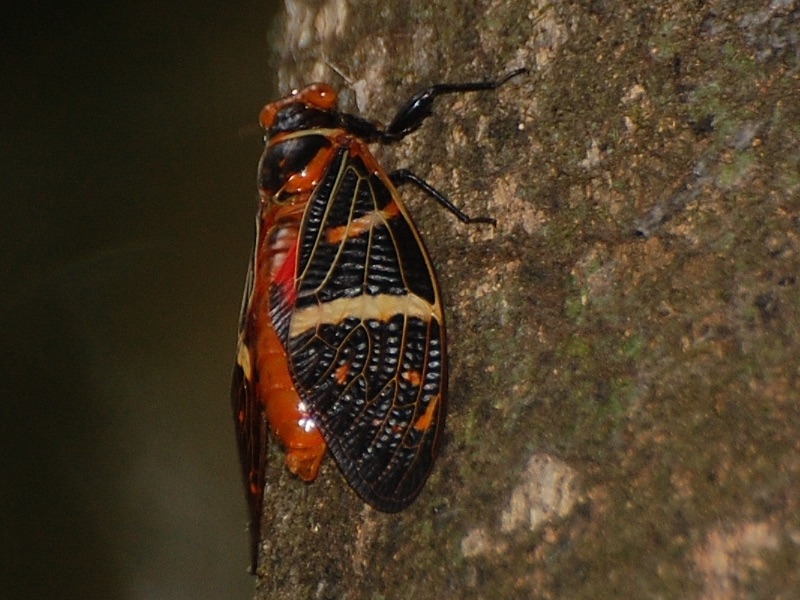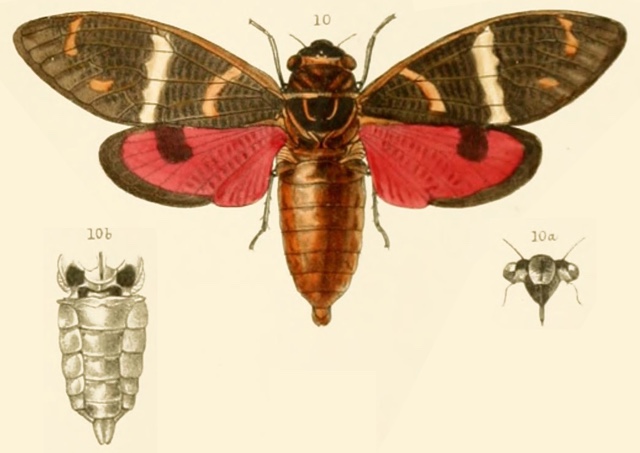
There are many myths (widely held but false beliefs or ideas) about cicadas. Time to bust some cicada myths.
Myth 1: Cicadas are sleeping when they are underground.
There’s a popular meme that [mis]states the following “if cicadas can sleep for 17 years and then wake up only to scream and reproduce so can i”. The actual tweet doesn’t say “reproduce”, but I want to keep it clean.
American periodical cicadas aren’t sleeping the entire 17 years they’re underground. Much of the time they’re digging tunnels and building feeding cells, tapping into roots and feeding, vying with other cicadas for space along a crowded root system, growing (they experience four phases or instars while underground), avoiding unfavorable conditions like flooding, and possibly actively avoiding predators like moles and voles. Yes, cicadas can sleep — or at least the insect version of sleep called torpor — but they are definitely not asleep for 17 years.
That said cicadas do spend their time screaming (the males) and procreating once above ground.
Myth 2: All cicadas have a 17 year life cycle.
This is false. Only three species, out of the thousands of cicada species in the world, have a 17-year life cycle: Magicicada septendecim, Magicicada cassini, and Magicicada septendecula.
Myth 3: All cicadas have periodical life cycles and synchronized emergences.
This is false. Only seven species in the United States (belonging to the genus Magicicada), and a few species in Asia (belonging to the genus Chremistica 1) have been confirmed to have periodical life cycles and synchronized emergences.
All other species of cicadas emerge annually, although in some years they are more plentiful than in others.
Myth 4: All cicadas live a prime number of years.
Many cicadas live a prime number of years, but some do not. Chremistica ribhoi, the World Cup cicada, has four year life cycle.
Myth 5: A long, periodical, prime number life cycle has allowed American periodical cicadas to avoid gaining a predator.
American periodical cicadas have avoided gaining an animal predator that specifically predates them, but they haven’t avoided a fungus. Massospora cicadina is a fungal parasite of Magicicada cicadas.
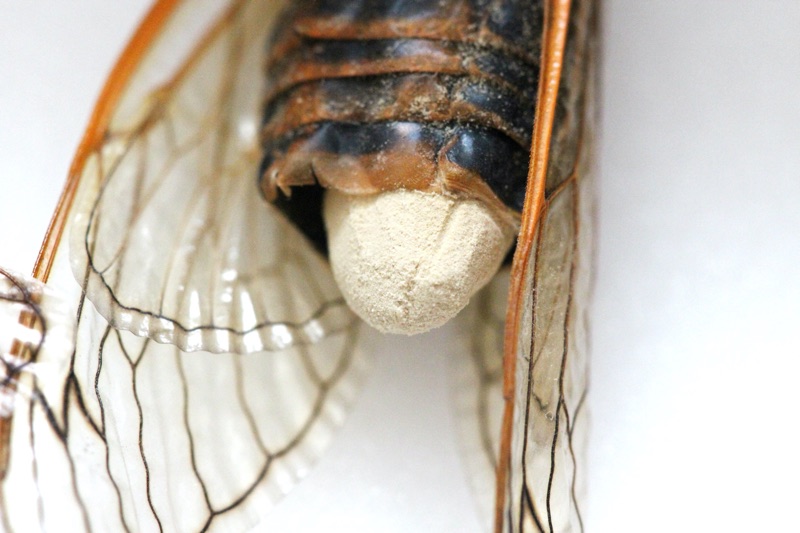
That said, just about any animal will eat an American periodical cicada, so they definitely get eaten. They get eaten a lot.
Myth 6: Cicadas make their well-known sound by stridulation, like crickets, grasshoppers & katydids.
It is true that some cicadas can make noise by stridulation, making sound by rubbing body parts.
However, and this is a huge “however”, the sound cicadas are known for is made by organs found in male cicadas called tymbals. Tymbals are a pair of ribbed membranes, that produce the cicada’s sound when they are flexed in and out by muscles. The mechanism is like the popping sound made when the plastic of a soda pop bottle is flexed in and out.
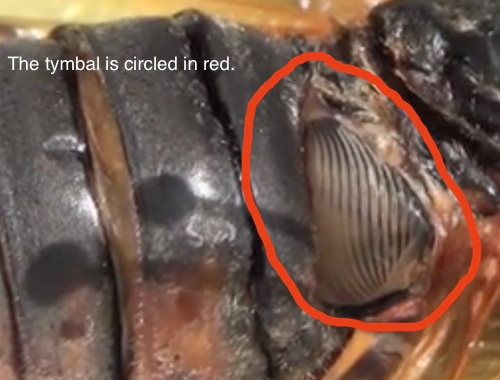
Cicadas can also make sound by flicking or clapping their wings.
Myth 7: Cicadas eat vegetation.
This is false. Cicadas lack the mouthparts to chew and swallow vegetable matter. Your tomatoes are safe around cicadas. Rather than eating solid food, cicadas ingest xylem, which is a type of tree sap that cicadas drink through their straw-like mouthparts.
Myth 8: American periodical cicadas are locusts.
Cicadas are not locusts. Locusts are a form of grasshopper. People confuse cicadas with locusts because both insects aggregate in massive numbers.
This is an image of a locust:
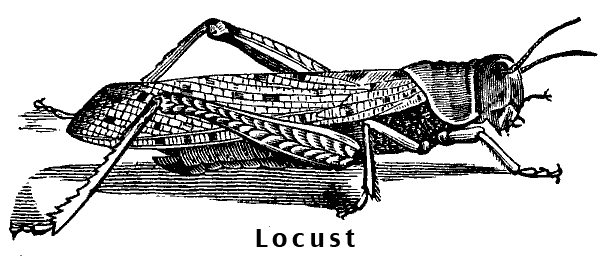
| Characteristic |
Locust |
Cicada |
| Order |
Orthoptera |
Hemiptera |
| Hind Legs |
Giant hind legs for jumping |
Hind legs about the same size as other legs; great for climbing and perching. |
| What they eat |
Everything green they can find to eat |
Xylem sap |
| They’re in your town |
All the plants in your town have been stripped bare |
Cool UFO movie soundtrack sounds during the day |
Myth 9: If you see a W appear in a cicada’s wings it means there will be a war. If you see a P, there will be peace.
This is the most mythical of cicada myths and has no basis in fact. That said, here’s the W:
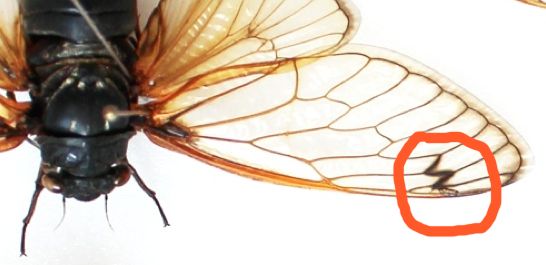
Myth 10: Cicadas only emerge during the Summer
This is not true. Many cicadas emerge outside of summer months.
Summer in the northern hemisphere is June 20-September 22, and in the southern hemisphere December 21-March 20 (although, I see references that say Sep 1 – November 30 in Australia).
Many species of cicadas emerge and peak before June 20th in the United States, including Magicicada periodical cicadas, and favorites of fly fishers like Okanagana and Platypedia. I see a lot of cicada merchandise (shirts, tote-bags) that claim Magicicada broods emerge in the summer, but this is 100% false. They are Spring cicadas.
The cicada season in Australia usually begins in September with the emergence of Bladder Cicadas, making it a springtime cicada.
1 Hajong, S.R. 2013. Mass emergence of a cicada (homoptera: cicadidae) and its capture methods and consumption by villagers in the ri-bhoi district of Meghalaya. Department of Zoology, North-Eastern Hill University, Shillong — 793 022, Meghalaya, India.





